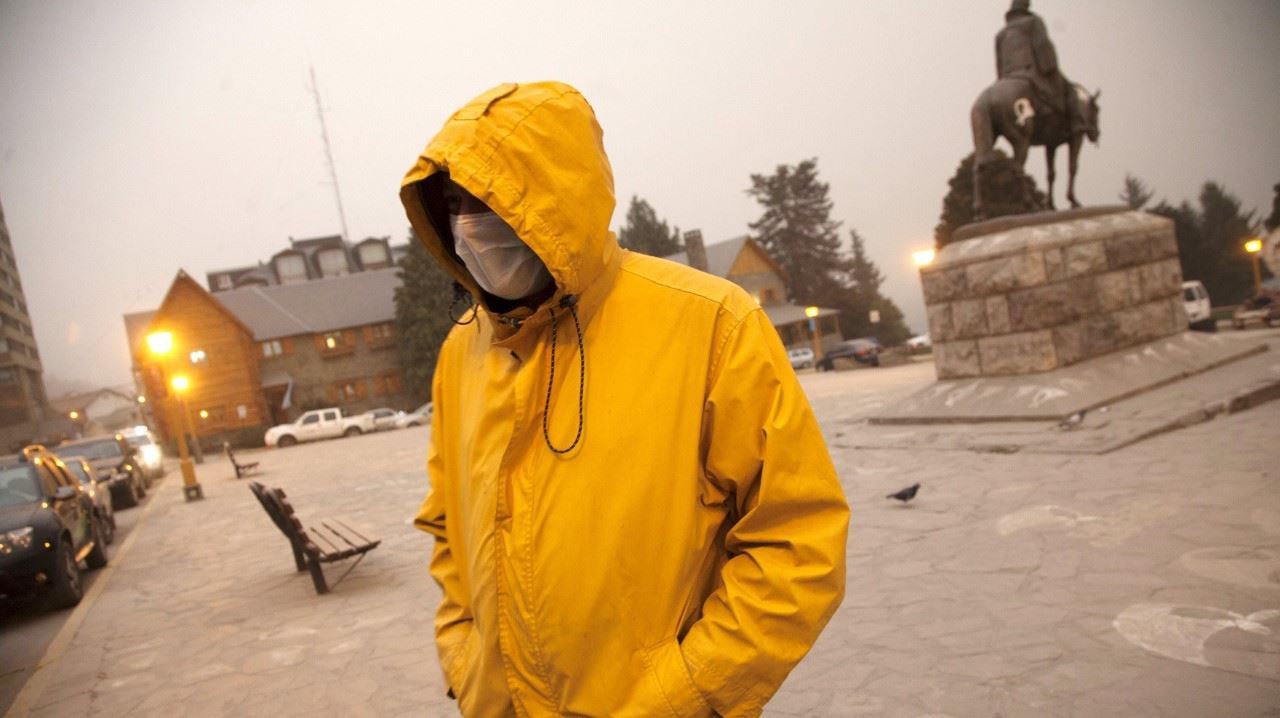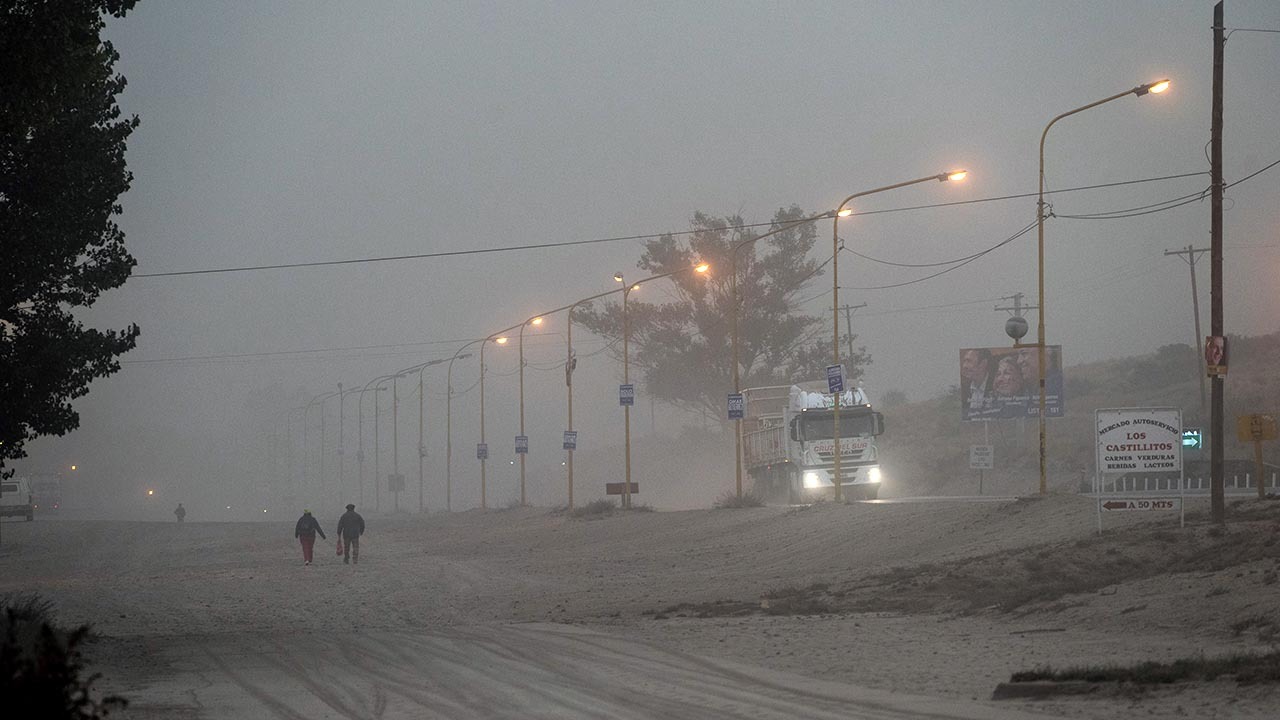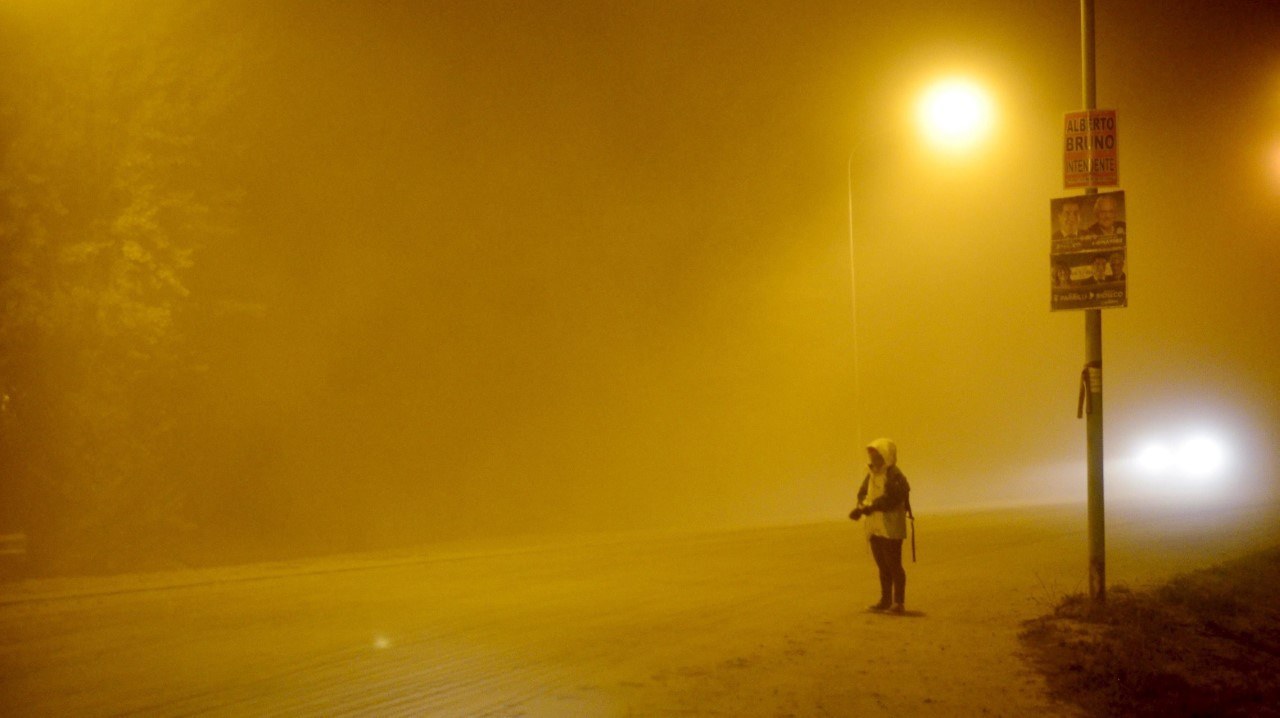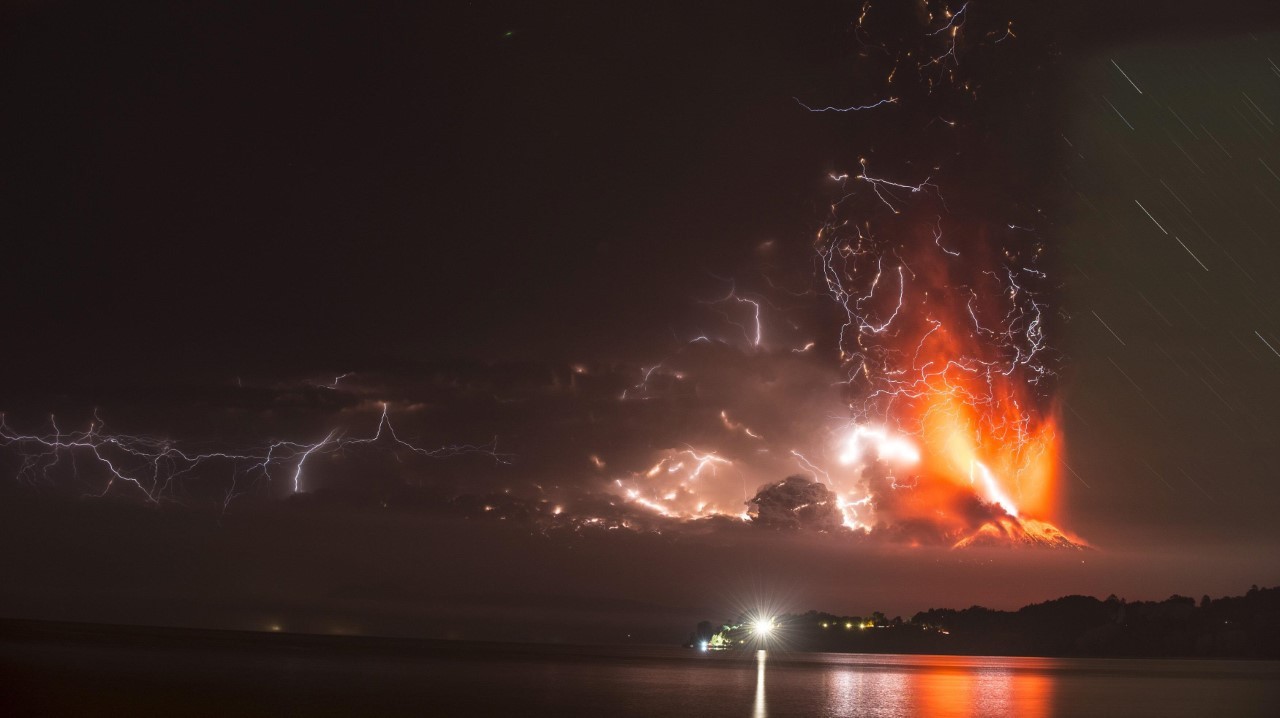
It’s the break of dawn but the sun is not coming out in Bariloche. “Its like living inside a cloud” says a local resident. The volcanic ash covers everything. The stench of sulfur is overwhelming.


Volcanic Ash in Bariloche, Argentina.

Calbuco erupted last night in Chile, sending tons of ash, rock and lava into the night sky. Six hours later it erupted again even stronger than the first time. Since then, literally all hell broke loose. Chile is on “Red Alert” and has established a 20 km exclusion zone around the volcano. Hundreds have been evacuated. The western winds send the ash across the border into Argentina, affecting the towns in the vicinity.
100 km from the volcano, the city of Bariloche is on full alert. There’s no schools, people are told to stay indoors, ration water and avoid rushing to stores for supplies. People are asked to ration fuel and minimize its use, saving it for emergency and rescue vehicles. Flights to the area have been canceled. There are already concerns regarding the contamination of surface water sources. Volcanic ash is also known to clog intake structures, cause abrasion damage to pumps and block pipes, interrupting the supply of water.
The ash is expected to reach as far as Buenos Aires. During the eruption of Puyehue in 2011 I got to experience first-hand what it’s like to wake up one day and see everything covered with grey volcanic ash. It soon becomes hard to breathe. You throat itches and it stings your eyes. You’re basically breathing in small pieces of glass. I can’t imagine what those people are going through right now.

What we can learn from this:
*You need respirators and eye protection. Most people just try to get by with simple facemasks, but authorities advice people with respiratory complications to get better quality respirators. In some parts respirators are distributed by local authorities but there’s not enough for everyone and soon people have to buy their own, if they find them. Common single layer fabric facemasks can go for ten times their previous market value.
Proper full face respirators (like full face 3M 7162) such as the ones often recommended here are all but priceless in such a scenario. Even better, get a respirator that uses a NATO 40mm NBC canister.
*Water. Remember what we always say about water: it’s the most overlooked supply. Have a good water filter but also store enough water as well! Already in some parts of Bariloche, a gallon of water is going for 8 Usd, about 80 pesos. Keep in mind, we’re talking about a region known for its massive forests and lakes, think Alaska, yet that’s the going price for water in a region where just two days ago you could just go and pick as much as you wanted from the nearest pristine lake. All this changes immediately when volcanic ash starts falling and you can no longer drink the water around you.
*Food, fuel and other essential supplies. The basics we always talk about come into play here as well. As the volcano erupts, everyone rushes to the stores to stock up, just like it happens with storms and hurricanes. Have your supplies ahead of time.
*A Bariloche resident explains “We learned from the last volcano eruption. Now we know how heavy accumulated volcanic ash can be, so we make sure to remove it from the roofs. Last time many roofs collapsed because of the weight of the ash”. Many people have now sealed their homes with tape and protected their vehicles in preparation.

- Car stuck in Chile
*You need a Bug Out Plan. Its hard to explain how difficult life can be when you no longer have the privilege of breathing in fresh air. For most people, leaving the affected area until conditions improve is a good idea. For some people, that move may be permanent. During the 2011 Puyehue eruption, many farmers lost all their crops to the ash. Plants died, animals starved. The surface water was contaminated, the grass was covered in ash. Sheep would destroy their teeth, eroded by the glass-like volcanic ash. Yet again, another example as of why you just can’t live in your Bug Out Location and how disasters often make no distinction between urban and rural areas, indiscriminately affecting both.
FerFAL
Fernando “FerFAL” Aguirre is the author of “The Modern Survival Manual: Surviving the Economic Collapse” and “Bugging Out and Relocating: When Staying is not an Option”.









2 comments:
1) European Science Foundation re how a really big volcano could kill off large numbers of people due to famine/crop failures:
http://www.dailymail.co.uk/sciencetech/article-3039652/Will-volcanic-eruption-destroy-humanity-Scientists-warn-world-begin-preparing-explosive-global-catastrophe.html
http://www.esf.org/uploads/media/Natural_Hazards.pdf
It is a bigger and more likely threat than a large asteroid strike.
The Yellowstone caldera is one of the most massive threats --if it ever erupted, it could lay down several feet of ash across much of the USA..
The truly unfortunate down there are suffering from the disease with the longest name Pneumonoultramicroscopicsilicovolcanoconiosis. Pneumonoultramicroscopicsilicovolcanoconiosis is better known as silicosis.
Post a Comment